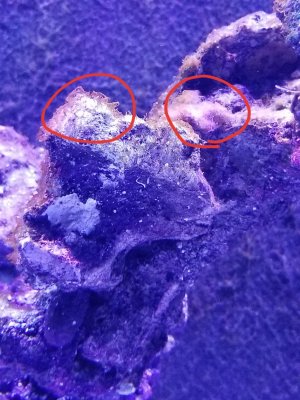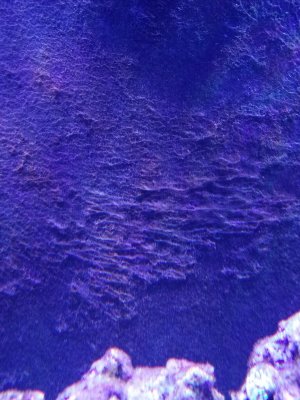Help! I have the stuff in the picture I attached here. I posted it here because Gelidiopsis seems to be the closest to it. I have not yet found what eats it or how to control it. It is in a flat with Yellow Tangs, a Tomini Tang, a Powder Brown Tang, a Fox Face, many Emerald Crabs, blue leg hermits, Mexican Turbo Snails, and Turban (Tectus fenestratus) snails. I tried several different species of urchins, but they avoid it in favor of the coralline algae and can't get into the nooks and crannies. Other info: I used Vibrant for a few months in this system at the higher off-label dose they recommend and it took care of all the algae in the system except this one, essentially selecting this one for success. I have since added some hair algae and a green film algae to the system to try to compete with it, but that isn't slowing it down at all. My Tangs eat the new introductions and keep them in check, but not this one.GELIDIOPSIS AKA WIRE ALGAE:

IDENTIFICATION:
This algae grown on the rock work in long red or brown wiry strands.
WHAT FEED IT:
This algae like nitrates.
HOW TO CONTROL IT:
This algae is very easy to control and grows slower then most and is readily removed by pulling the tuffs out by hand. Along with manual removal aggressive skimming,and good husbandry this is a easily conquerable algae.
WHY ITS BAD:
This algae can suffocate other corals.
NATURAL HERBIVORES:
Surgeonfish, Diadema urchin.
I'm open to suggestions - Other types of herbivores (reef safe fish or inverts), Hydrogen Peroxide which does kill it when applied in off the shelf 3% concentaration for 60-90 seconds, but is also hard on the corals, and I can't wash the whole system with Peroxide. Or can I? I'm Open to lighting color and period changes as well. It doesn't grow in the dimmer parts of the flat, but I'm not sure if my SPS can survive on the low light level it will take to kill this stuff. Does anybody know the answer to that question?
This needs to be a high nutrient system for coral growth and health, and i do monitor my nitrate/Phosphate balance so there are both present. I appreciate any help anybody can provide!
























